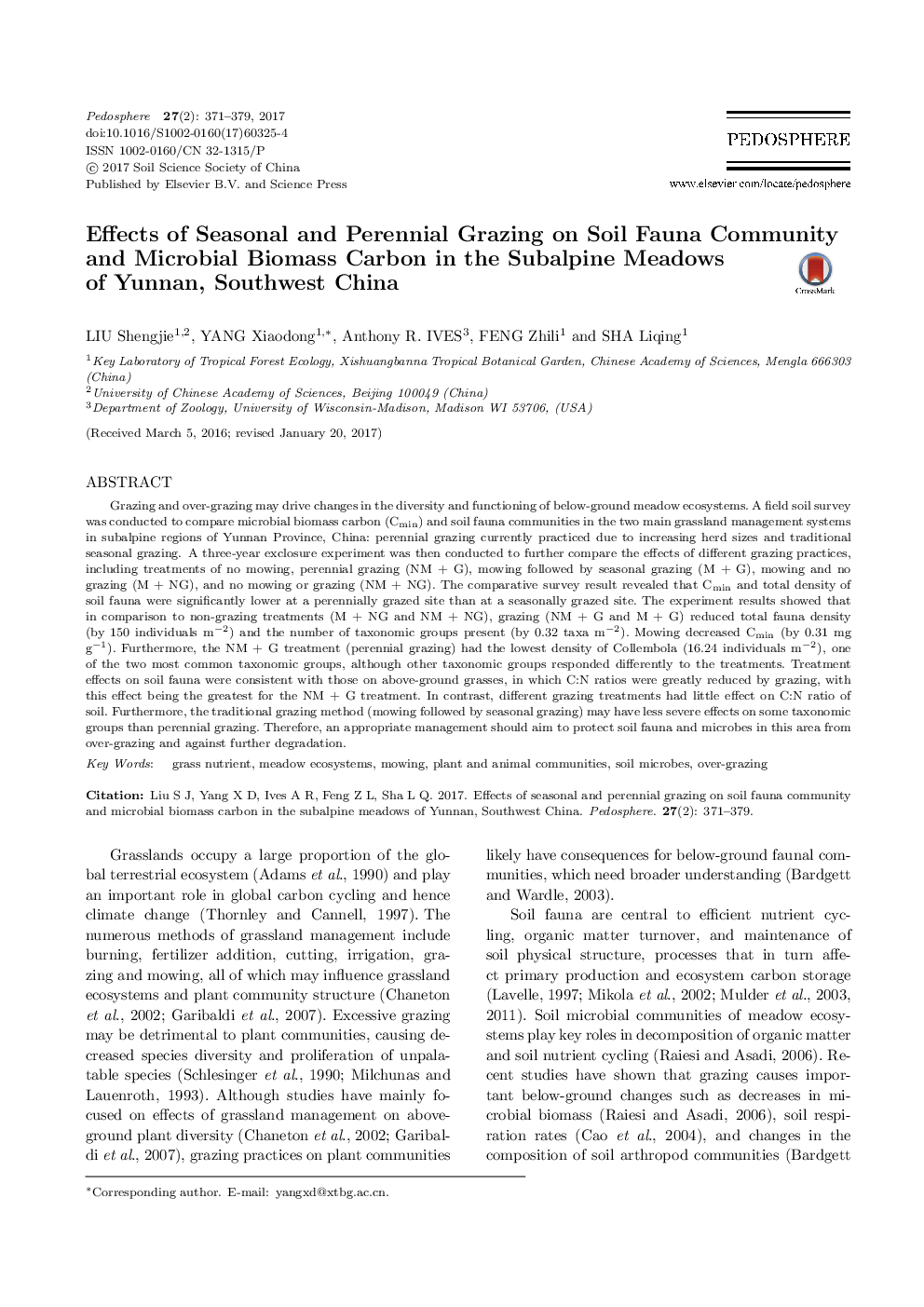| Article ID | Journal | Published Year | Pages | File Type |
|---|---|---|---|---|
| 8895525 | Pedosphere | 2017 | 9 Pages |
Abstract
Grazing and over-grazing may drive changes in the diversity and functioning of below-ground meadow ecosystems. A field soil survey was conducted to compare microbial biomass carbon (Cmin) and soil fauna communities in the two main grassland management systems in subalpine regions of Yunnan Province, China: perennial grazing currently practiced due to increasing herd sizes and traditional seasonal grazing. A three-year exclosure experiment was then conducted to further compare the effects of different grazing practices, including treatments of no mowing, perennial grazing (NM + G), mowing followed by seasonal grazing (M + G), mowing and no grazing (M + NG), and no mowing or grazing (NM + NG). The comparative survey result revealed that Cmin and total density of soil fauna were significantly lower at a perennially grazed site than at a seasonally grazed site. The experiment results showed that in comparison to non-grazing treatments (M + NG and NM + NG), grazing (NM + G and M + G) reduced total fauna density (by 150 individuals mâ2) and the number of taxonomic groups present (by 0.32 taxa mâ2). Mowing decreased Cmin (by 0.31 mg gâ1). Furthermore, the NM + G treatment (perennial grazing) had the lowest density of Collembola (16.24 individuals mâ2), one of the two most common taxonomic groups, although other taxonomic groups responded differently to the treatments. Treatment effects on soil fauna were consistent with those on above-ground grasses, in which C:N ratios were greatly reduced by grazing, with this effect being the greatest for the NM + G treatment. In contrast, different grazing treatments had little effect on C:N ratio of soil. Furthermore, the traditional grazing method (mowing followed by seasonal grazing) may have less severe effects on some taxonomic groups than perennial grazing. Therefore, an appropriate management should aim to protect soil fauna and microbes in this area from over-grazing and against further degradation.
Keywords
Related Topics
Life Sciences
Agricultural and Biological Sciences
Soil Science
Authors
Shengjie LIU, Xiaodong YANG, Anthony R. IVES, Zhili FENG, Liqing SHA,
